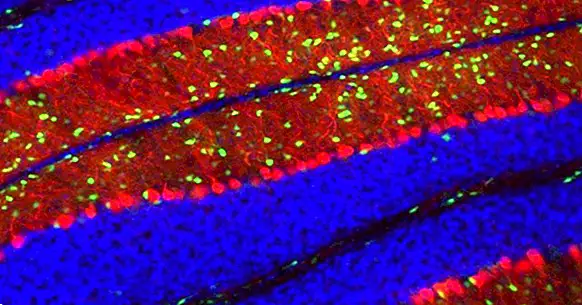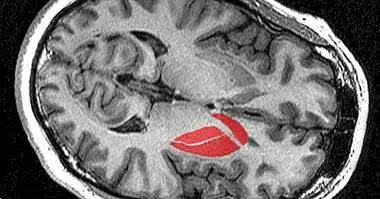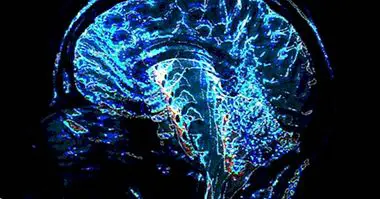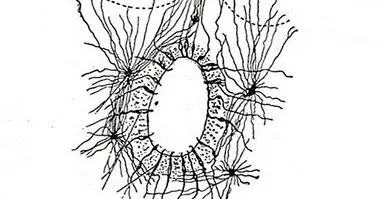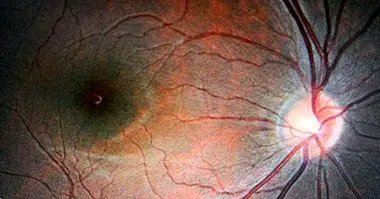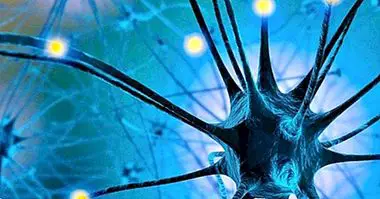Purkinje neurons: their functions and characteristics
It is estimated that, at the time of our birth, we have approximately 80 million neurons or brain cells. Thanks to the activity of these, our nervous system is able to operate at full power.
One of the types of neurons that inhabit our brain are neurons or Purkinje cells . Throughout this article we will explain what these neurons consist of, how they work and what they are for, as well as the pathologies associated with them.
- Related article: "Types of neurons: characteristics and functions"
What are Purkinje neurons?
Purkinje cells or neurons are named after the anatomist, physiologist and botanist of Czech origin Jan Evangelista Purkyne, discoverer of these elements. These large cells are found in all invertebrate animals , are a type of GABAergic neuron and constitute the functional units of the cerebellum.
After its discovery, there have been many researchers who have tried to decipher the enigmas of this neuron. The well-known scientists Camillo Golgi and Santiago Ramón y Cajal, spent years of their lives studying these cells . Thanks to these investigations, we currently have practically absolute knowledge about the anatomy and structure of Purkinje neurons, as well as the details and specific functions of these.
Although they are mainly found in the cerebellar cortex, forming the Purkinje layer between the molecular layer and the granular layer, They can also be found in the myocardium, that is, in the muscular part of the heart .
The connections of the Purkinje cells
Only about 30 million are found in the cerebellum of neurons of this type, each of which is linked to around one million nerve endings of another type of different cell. These cells to which the Purkinje neurons are attached are classified into two types:
Mossy cells
They come from the brainstem and the spinal cord. As they are closer to the Purkinje neurons, they branch off into fibers that lie parallel to each other.
Climbing cells
They ascend from the medulla oblongata and the brainstem . However, this type of climbing cells only bind to a single Purkinje neuron.
What is the structure of these nerve cells?
As discussed above, Purkinje neurons are one of the largest cells found in our brain. Its dendritic axis is extremely complex and it is distinguished by presenting a large number of entangled dendritic spines.
These cells are placed facing each other, as if they were the dominoes, forming layers between which the parallel fibers that come from the deeper layers transit.
Through the synapses, the parallel fibers transmit excitatory impulses of weak potential to the dendritic spines of Purkinje neurons . However, the impulses of those ascending fibers that come from the inferior olivary nucleus of the marrow emit excitatory impulses of great intensity. In addition, these parallel fibers circulate at right angles through the dendritic axis of the Purkinje cell. These fibers, which can be counted in hundreds of thousands, form synapses with a single neuron of this type.
Finally, Purkinje neurons transmit projections of inhibitory fibers to the deep cerebellar nuclei, constituting the only way of escape from the cerebellar cortex with effects on motor coordination.
- Related article: "Parts of the human brain (and functions)"
What functions do they have?
Purkinje neurons they exert their effects through the use of electrophysiological activity . This type of activity can occur in two different ways, depending on whether the spikes of the neuron are simple or complex.
1. Activity in simple spikes
The electrophysiological activity rate of simple spikes oscillates between 17 and 150 Hz . This activity may appear spontaneously or at times when Purkinje neurons are activated by parallel fibers.
2. Activity in complex spikes
In the case of complex spikes, the intensity slows considerably, oscillating between 1 and 3 Hz of power.
The complex spikes are distinguished by having a long initial spike of high amplitude, which follows a high frequency shot but with a lower amplitude. These bursts of electrical activity are caused by the activation of the climbing fibers , named above.
What is known about them through investigations
Sodium and calcium play a fundamental role in the electrophysiological activity of Purkinje neurons and, therefore, in the correct function of the cerebellum.In addition, in recent years it has been revealed that the stimulation of climbing fibers triggers an alteration in the activity of the cell, going from a state of rest to an active one and vice versa) as if it were a kind of button or button.
However, the results of these investigations have been widely debated. The reason is that the data obtained in other studies point to the idea that these alterations in activity only occur when the person or animal is anesthetized; whereas if they are awake, Purkinje neurons always function in a state of complete activity.
Finally, the results extracted from recent research suggest that Purkinje neurons have the ability to discharge endocannabinoid substances that can reduce the potential of synapses, both excitatory and inhibitory.
Pathologies and associated diseases
Since Purkinje neurons are found in both animals and humans, there are a variety of factors that can cause specific and specific anomalies for each species.
In the case of people, there are a large number of causes that can cause the deterioration or injury of Purkinje neurons. Genetic alterations, autoimmune or neurodegenerative diseases and toxic elements present in certain substances such as lithium, can cause serious damage to this type of cells.
In addition, in Alzheimer's disease, a decrease in the dendritic branches of these neurons has been described.
On the other hand, in the animal world there is a strange condition that causes atrophy and malfunction of these neurons after birth. This disease known as cerebellar abiotrophy is distinguished by a large number of symptoms, among which are:
- Hyperactivity
- Lack of reflexes .
- Lack of ability to perceive space and distances.
- Ataxia.
- Shudder.
In the case of cerebellar hypoplasia , Purkinje neurons have not finished developing or die when the small one is still in the maternal womb.

